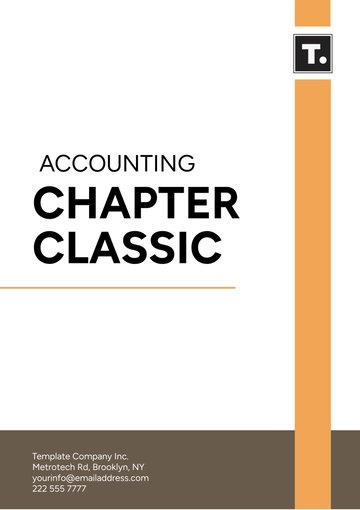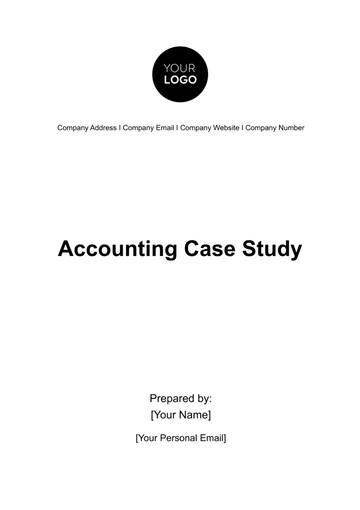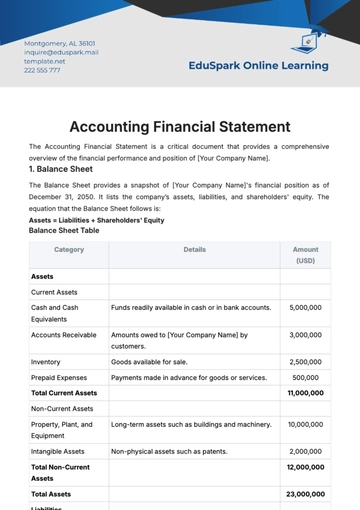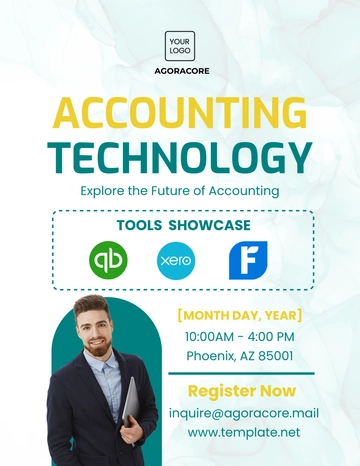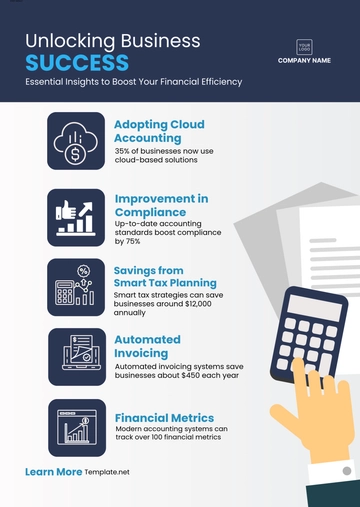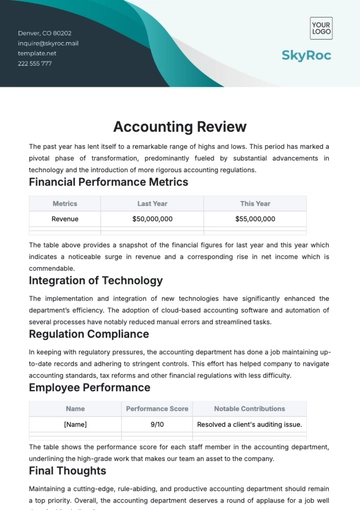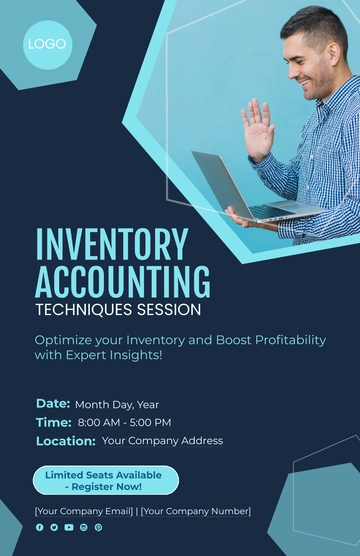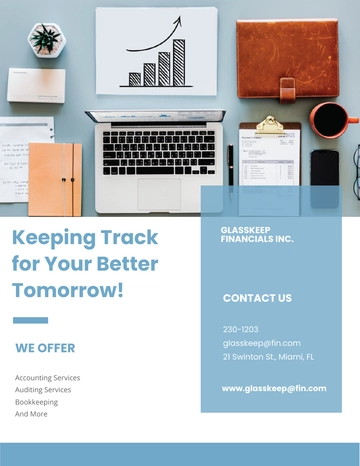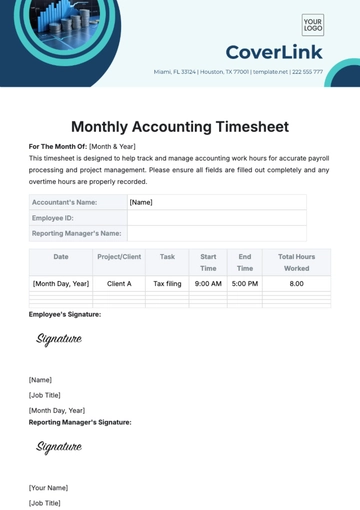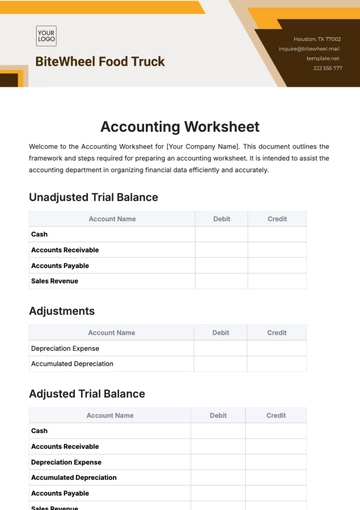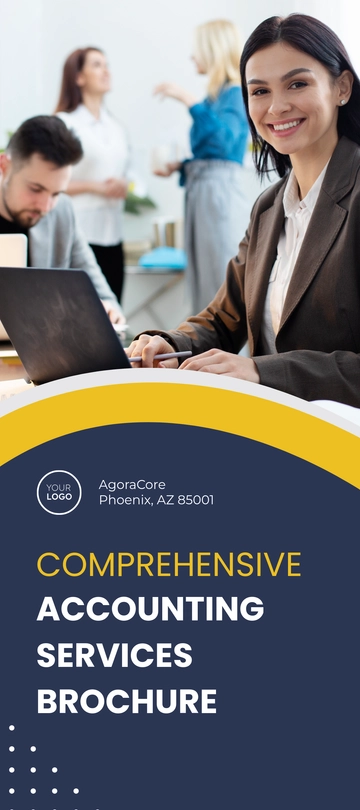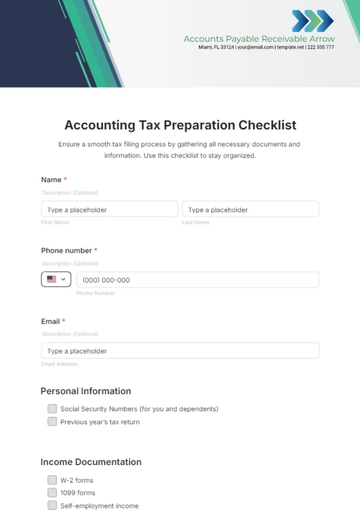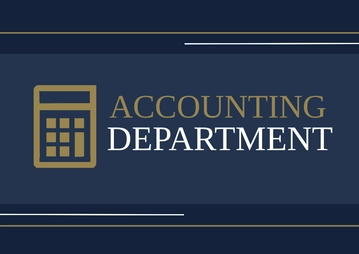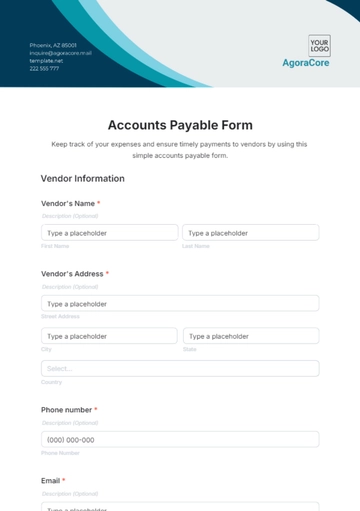Free Accounting Benchmarking Study

Executive Summary
A. Introduction
In today's dynamic business landscape, maintaining a competitive edge requires a deep understanding of your company's financial performance relative to industry benchmarks. This executive summary introduces the Accounting Benchmarking Study, outlining its purpose to evaluate and compare the accounting practices of [Your Company Name] with industry standards.
B. Key Findings
Through an in-depth analysis of financial metrics, operational efficiency, and risk management, this study has unearthed critical insights into [Your Company Name]'s position in the market. Key findings include areas of strength and potential improvement, providing a foundation for strategic decision-making.
C. Recommendations
Building on the identified areas for improvement, actionable recommendations are proposed in this section. These recommendations aim to enhance [Your Company Name]'s financial performance, streamline operations, and fortify risk management practices.
Company Profile
A. [Your Company Name]
[Your Company Name], established in [Year], is a [Industry Type] company dedicated to [Mission Statement]. With a commitment to excellence, our company has become a key player in the industry, offering [Products/Services].
B. Financial Snapshot
This subsection provides a snapshot of [Your Company Name]'s financial performance:
Revenue: | [$25 Million] (as of [2050]) |
Profit Margin: | [12%] |
Liquidity Ratio: | [1.5] |
These figures offer a glimpse into the overall financial health of [Your Company Name], serving as a baseline for benchmarking against industry standards.
C. Accounting Processes
Efficient accounting processes form the backbone of any successful organization. In this subsection, we outline the key accounting processes and systems implemented at [Your Company Name], including [mention specific software/tools] to ensure accuracy and transparency in financial reporting.
Industry Benchmarking
A. Industry Overview
The accounting industry is experiencing dynamic changes driven by technological advancements, regulatory updates, and shifting market demands. As of 2050, the industry is characterized by increased reliance on digital solutions for financial management, a growing emphasis on sustainability reporting, and a continued focus on compliance with evolving accounting standards.
B. Key Performance Indicators (KPIs)
To benchmark [Your Company Name] effectively, it's crucial to identify and understand the key performance indicators (KPIs) relevant to the accounting industry. Common KPIs include:
Return on Assets (ROA): Indicates how efficiently assets are used to generate earnings. (Industry Average: 8%)
Debt-to-Equity Ratio: Evaluates the proportion of debt used to finance operations relative to equity. (Industry Average: 0.5)
Current Ratio: Measures the ability to cover short-term liabilities with short-term assets. (Industry Average: 2.0)
C. Comparative Analysis
In comparing [Your Company Name] against industry averages for selected KPIs, several trends and insights have emerged. Notably, [Your Company Name] outperforms the industry average in terms of ROA, signaling effective asset utilization. However, a higher-than-average debt-to-equity ratio suggests potential opportunities for optimizing capital structure.
Financial Performance
A. Revenue and Profitability
Analysis of [Your Company Name]'s revenue and profitability unveils the following insights:
Revenue Growth: 15% (as of 2050) - [Your Company Name] has experienced robust revenue growth, outpacing the industry average of 10%.
Profit Margin: 18% - While maintaining a healthy profit margin, there's room for improvement to align with the industry benchmark of 20%.
B. Cost Management
Efficient cost management is critical for sustained profitability. In assessing [Your Company Name]'s cost structure, specific areas for consideration include:
Operating Expenses: $12 Million - Comparison with industry benchmarks indicates [Your Company Name]'s operating expenses are slightly above the industry average of $10 Million.
Cost of Goods Sold (COGS): $8 Million - Aligning COGS with industry standards is essential for optimizing overall cost efficiency.
Operational Efficiency
A. Process Efficiency
Efficiency in accounting processes is paramount for overall operational effectiveness. [Your Company Name] employs a comprehensive set of processes to ensure accuracy and timeliness in financial reporting.
Invoice Processing Time: 4 days - Compared to the industry benchmark of 6 days, [Your Company Name] demonstrates a faster turnaround in invoice processing.
Month-End Close Efficiency: 5 days - Streamlining the month-end close process is vital, and [Your Company Name] aligns with the industry average of 5 days.
B. Technology Utilization
Adopting cutting-edge technologies enhances operational efficiency. [Your Company Name] leverages state-of-the-art accounting software and tools.
Automation Rate: 85% - Automation plays a crucial role in efficiency. [Your Company Name]'s current automation rate is above the industry average of 80%.
Cybersecurity Measures: Utilizing advanced encryption and multi-factor authentication protocols ensures robust cybersecurity, safeguarding financial data.
Risk Management
A. Compliance
Maintaining compliance with industry regulations is a priority for [Your Company Name].
Regulatory Compliance Score: 97 - A comprehensive score based on adherence to relevant regulations. [Your Company Name] consistently exceeds industry standards, reflecting a commitment to regulatory compliance.
Audit Preparedness: Rigorous audit preparedness procedures, including regular internal audits and compliance training, ensure [Your Company Name] is well-prepared for external audits.
B. Risk Mitigation
Identifying and mitigating risks is essential for sustained success.
Risk Assessment Frequency: Monthly - Regular risk assessments are conducted to identify potential issues. [Your Company Name]'s proactive approach aligns with industry best practices.
Risk Mitigation Strategies: Implementing comprehensive risk mitigation strategies, including diversification of investments and contingency planning, ensures [Your Company Name] is well-prepared to address identified risks.
These operational and risk management insights provide a holistic view of [Your Company Name]'s effectiveness in maintaining operational efficiency and mitigating potential risks.
Invoice Processing Time: | 4 days (Industry Benchmark: 6 days) |
Month-End Close Efficiency: | 5 days (Industry Average: 5 days) |
Automation Rate: | 85% (Industry Average: 80%) |
Regulatory Compliance Score: | 97 (Industry Standard: 90) |
Risk Assessment Frequency: | Monthly (Industry Best Practice: Quarterly) |
Best Practices
A. Industry Best Practices
Staying aligned with industry best practices is essential for [Your Company Name] to maintain a competitive edge and operational excellence.
Adoption of Cloud-Based Accounting Systems: [Your Company Name] currently utilizes cloud-based accounting systems for 70% of its operations, showcasing a commitment to modern practices.
Continuous Professional Development (CPD): [Your Company Name] already implements a CPD program, ensuring accounting professionals receive at least 20 hours of training annually.
B. Recommendations for Improvement
Based on the benchmarking analysis, the following recommendations are proposed for [Your Company Name]:
Implementation of Advanced Analytics: Exploring the integration of advanced analytics tools into the current accounting infrastructure, aiming for a 15% increase in data-driven decision-making.
Enhanced Employee Training Programs: Strengthening employee training programs to include cybersecurity awareness and technological advancements, with a goal of achieving a 20% improvement in employee awareness and competence.
Stakeholder Engagement
A. Communication Strategies
Effective communication with stakeholders is crucial for maintaining transparency and trust. [Your Company Name] employs the following strategies:
Regular Financial Reporting: [Your Company Name] provides stakeholders with timely and comprehensive financial reports, ensuring transparency in financial performance.
Stakeholder Feedback Mechanism: Implementing a feedback mechanism to gather insights from stakeholders, fostering a collaborative approach to decision-making.
B. Stakeholder Satisfaction Metrics
Assessing stakeholder satisfaction is essential. [Your Company Name] utilizes the following metrics:'
Stakeholder Surveys: Conducting regular surveys to gauge stakeholder satisfaction, with a current satisfaction rate of 92%.
Response Time to Stakeholder Inquiries: 4 hours - Ensuring prompt responses to stakeholder inquiries is a priority, aligning with industry standards.
Environmental, Social, and Governance (ESG) Practices
A. Environmental Sustainability
Incorporating sustainable practices is integral to corporate responsibility. [Your Company Name] engages in the following environmental initiatives:
Carbon Footprint Reduction: 15% reduction in carbon emissions compared to the previous year, showcasing a commitment to environmental sustainability.
Paperless Operations: [Your Company Name] actively promotes paperless operations, contributing to a 20% reduction in environmental impact.
B. Social Responsibility
Promoting social responsibility is part of [Your Company Name]'s corporate ethos. Key initiatives include:
Community Outreach Programs: Engaging in 5 community projects annually, fostering a positive impact on local communities.
Diversity and Inclusion Initiatives: Implementing initiatives to improve diversity metrics, with a target of a 10% increase in representation.
Conclusion
A. Summary
The Accounting Benchmarking Study reveals that [Your Company Name] demonstrates commendable strengths in areas such as revenue growth, process efficiency, and regulatory compliance. However, opportunities for improvement exist in the adoption of certain best practices and refining specific operational processes.
B. Future Outlook
Looking ahead, [Your Company Name] is well-positioned to capitalize on identified opportunities and address areas for improvement. By embracing industry best practices, leveraging advanced technologies, and continuing to prioritize compliance and risk management, [Your Company Name] can navigate future challenges effectively.
- 100% Customizable, free editor
- Access 1 Million+ Templates, photo’s & graphics
- Download or share as a template
- Click and replace photos, graphics, text, backgrounds
- Resize, crop, AI write & more
- Access advanced editor
Enhance your financial strategy with the Accounting Benchmarking Study Template from Template.net. This editable and customizable tool empowers you to conduct insightful benchmarking studies. Utilize our Ai Editor Tool for seamless editing, ensuring adaptability to your specific needs. Elevate your accounting practices with this user-friendly template, designed for efficiency and precision in analyzing and improving financial performance.





